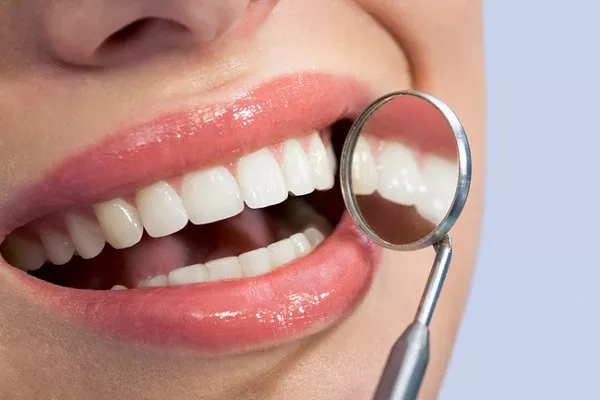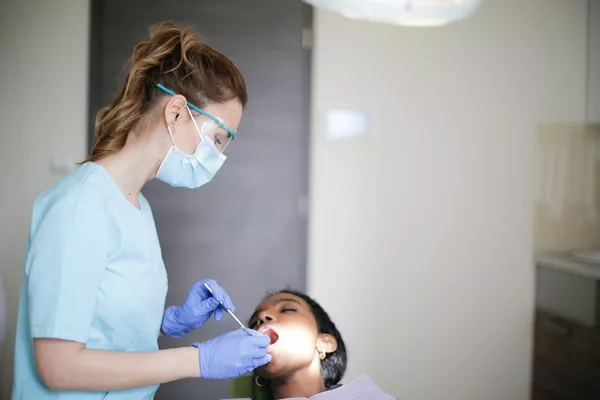Gingivitis is a common yet often misunderstood dental issue that affects a significant portion of the population. Despite being preventable and treatable, many individuals find themselves grappling with recurring bouts of gingivitis. Understanding the nature of gingivitis, its causes, and how to effectively prevent and treat it is crucial for maintaining optimal oral health.
Understanding Gingivitis
Gingivitis is an inflammation of the gums, usually caused by a bacterial infection. It is the earliest stage of gum disease and, if left untreated, can progress to periodontitis, a more severe form of gum disease that can lead to tooth loss. Gingivitis is characterized by red, swollen gums that may bleed during brushing or flossing.
Common symptoms of gingivitis include:
- Red, swollen gums
- Bleeding gums, especially when brushing or flossing
- Bad breath (halitosis)
- Receding gums
- Tenderness or discomfort in the gums
Despite its prevalence, gingivitis is often overlooked because its symptoms can be mild. However, neglecting gingivitis can lead to more serious oral health problems, making early detection and treatment essential.
Common Causes of Gingivitis
The primary cause of gingivitis is plaque—a sticky, colorless film of bacteria that forms on teeth. Plaque is constantly forming on your teeth, and if not removed by brushing and flossing, it can harden into tartar (calculus), which further irritates the gums.
Poor Oral Hygiene
Poor oral hygiene is the most common cause of gingivitis. Inadequate brushing and flossing allow plaque to build up along the gumline, leading to irritation and inflammation of the gums.
Plaque Buildup
Plaque contains bacteria that produce toxins, which can irritate the gum tissue and cause gingivitis. Daily removal of plaque through proper brushing and flossing is crucial to prevent gingivitis.
Tartar Formation
When plaque is not removed, it hardens into tartar, which can only be removed by a dental professional. Tartar provides a surface for more plaque to adhere to, exacerbating the problem and making it more difficult to maintain clean teeth and gums.
Role of Oral Hygiene
Maintaining good oral hygiene is the cornerstone of preventing gingivitis. Effective oral hygiene practices include:
Brushing
Brush your teeth at least twice a day with fluoride toothpaste. Use a soft-bristled toothbrush and ensure you brush all surfaces of your teeth, including along the gumline. Electric toothbrushes can be particularly effective at removing plaque.
Flossing
Floss daily to remove plaque and food particles from between your teeth and under the gumline. Flossing reaches areas that your toothbrush can’t, helping to prevent plaque buildup.
Regular Dental Checkups
Visit your dentist at least twice a year for professional cleanings and checkups. Regular dental visits allow for early detection and treatment of gingivitis and other dental issues.
Risk Factors for Recurrence
Several factors can increase your risk of developing gingivitis or experiencing recurrent episodes:
Smoking
Smoking is a major risk factor for gingivitis and periodontal disease. It affects the normal function of gum tissue cells, making your gums more susceptible to infections and impairing their ability to heal.
Diabetes
Diabetes can impair blood flow to the gums, making it more difficult for your body to fight infections. High blood sugar levels can also increase the risk of gum disease.
Hormonal Changes
Hormonal changes during pregnancy, menstruation, and menopause can increase gum sensitivity and the risk of gingivitis. These changes can affect the blood supply to the gum tissue and the body’s response to plaque.
Certain Medications
Medications that reduce saliva flow can increase the risk of gingivitis because saliva helps protect your gums by washing away food and plaque. Some drugs can also cause gum overgrowth, making it easier for plaque to accumulate.
Treatment Options for Gingivitis
If you have gingivitis, professional treatment can help restore your gum health. Common treatments include:
Deep Cleaning Procedures
Deep cleaning procedures like scaling and root planing are effective in treating gingivitis. Scaling removes tartar from above and below the gumline, while root planing smooths the root surfaces, discouraging further plaque buildup and allowing the gums to reattach to the teeth.
Antibacterial Mouthwash
Your dentist may recommend an antibacterial mouthwash to help reduce the bacterial load in your mouth and combat gingivitis. Chlorhexidine is a common prescription mouthwash used for this purpose.
Regular Professional Cleanings
Regular dental cleanings are crucial for maintaining healthy gums. Your dentist or dental hygienist can remove plaque and tartar that you cannot reach with your toothbrush and floss.
Preventive Measures
Preventing gingivitis from recurring involves maintaining good oral hygiene and making lifestyle changes. Here are some tips:
Use an Antibacterial Mouthwash
Using an antibacterial mouthwash can help reduce plaque and prevent gingivitis. Look for mouthwashes that contain ingredients like cetylpyridinium chloride or essential oils, which can help control bacteria in your mouth.
Quit Smoking
If you smoke, quitting is one of the best things you can do for your oral health. Smoking weakens your immune system, making it harder to fight off a gum infection. Talk to your healthcare provider about strategies for quitting.
Maintain a Healthy Diet
A balanced diet rich in vitamins and minerals can support your gum health. Vitamin C is particularly important for gum health, as it helps repair and maintain connective tissue.
Manage Stress
Chronic stress can weaken your immune system and increase your risk of gum disease. Find healthy ways to manage stress, such as exercise, meditation, or hobbies.
When to Seek Professional Help
It’s important to see a dentist or periodontist if you notice signs of gingivitis, especially if they persist or worsen despite good oral hygiene practices. Seek professional help if you experience:
- Persistent gum redness or swelling
- Gums that bleed easily
- Receding gums
- Persistent bad breath
- Painful chewing or tender gums
A dental professional can assess your gum health, provide appropriate treatment, and offer guidance on preventing future episodes of gingivitis.
Conclusion
Gingivitis is a common and preventable condition that can have serious consequences if left untreated. Understanding the causes of gingivitis, the importance of good oral hygiene, and the risk factors that contribute to its recurrence can help you maintain healthy gums. Regular dental visits, proper oral care, and lifestyle changes are essential in preventing and treating gingivitis. By taking proactive steps, you can reduce the likelihood of gingivitis recurring and enjoy better oral health.
FAQs about Gingivitis
1. Why is my gingivitis coming back?
Gingivitis, an inflammation of the gums, can recur due to several reasons:
Inadequate Oral Hygiene: Even if you brush your teeth daily, improper technique or insufficient brushing time can leave plaque behind, leading to gingivitis.
Irregular Dental Visits: Skipping regular dental check-ups and cleanings can allow plaque and tartar to accumulate, causing gum inflammation.
Lifestyle Factors: Smoking, poor diet, and stress can all contribute to the recurrence of gingivitis.
Medical Conditions: Certain illnesses, medications, and hormonal changes (e.g., pregnancy, menopause) can make your gums more susceptible to inflammation.
Genetics: Some people are more prone to gingivitis due to their genetic makeup.
2. How do you permanently cure gingivitis?
To permanently address gingivitis, it’s essential to adopt a comprehensive and consistent oral hygiene routine:
Proper Brushing Technique: Brush your teeth at least twice a day for two minutes each time using a soft-bristled toothbrush and fluoride toothpaste. Make sure to clean all surfaces of your teeth and along the gumline.
Flossing Daily: Floss between your teeth daily to remove plaque and food particles that your toothbrush can’t reach.
Use Mouthwash: An antimicrobial or antiseptic mouthwash can help reduce plaque and prevent gingivitis.
Regular Dental Visits: Visit your dentist for professional cleanings and check-ups at least twice a year.
Healthy Lifestyle Choices: Maintain a balanced diet, avoid smoking, and manage stress levels.
Treat Underlying Conditions: Address any medical conditions or hormonal changes that might be contributing to your gum issues with the help of your healthcare provider.
3. Why do I still get gingivitis even though I brush my teeth every day?
Several factors could explain why you still experience gingivitis despite daily brushing:
Ineffective Brushing: If you’re not brushing correctly or for a sufficient amount of time, plaque can still build up. Ensure you’re using the proper technique and brush for the recommended duration.
Missed Areas: It’s easy to miss certain areas, such as the back teeth or along the gumline. Make sure you’re thoroughly cleaning all parts of your mouth.
Lack of Flossing: Brushing alone may not remove all plaque, especially between teeth. Flossing is crucial to prevent gingivitis.
Plaque Buildup: Even with good oral hygiene, plaque can harden into tartar, which can only be removed by a dental professional. Regular cleanings are essential.
Other Risk Factors: Diet, stress, smoking, and certain health conditions can still cause gingivitis even with good oral hygiene.
4. How do you treat recurrent gingivitis?
Treating recurrent gingivitis involves a combination of good oral hygiene practices and professional care:
Enhanced Oral Hygiene Routine: Ensure you’re brushing twice daily, flossing daily, and using mouthwash. Consider using an electric toothbrush, which may be more effective at removing plaque.
Regular Dental Check-Ups: Increase the frequency of your dental visits if you’re prone to gingivitis. Your dentist can provide professional cleanings and monitor your gum health.
Diet and Lifestyle: Maintain a healthy diet rich in vitamins and minerals, reduce sugar intake, quit smoking, and manage stress.
Medication: In some cases, your dentist may prescribe antimicrobial mouth rinses or oral antibiotics to help control bacterial infection and inflammation.
Addressing Underlying Conditions: Work with your healthcare provider to manage any medical conditions that may be contributing to your gingivitis.
Professional Treatments: Your dentist may recommend deep cleaning procedures such as scaling and root planing to remove tartar and bacteria from below the gumline.
You Might Be Interested In
































